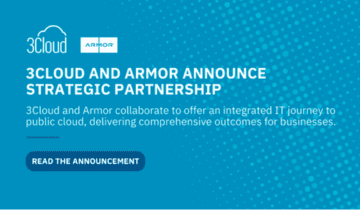Employee development is the process in which an employee, with the support of their employer, undergoes various training programs to enhance their current skills and knowledge, and acquire new abilities and offerings. In today’s work environment, employee development is viewed as the number one factor for employee retention, especially among Millennials. The most commonly used initiatives organizations implement include technical training programs and leadership development courses. It’s tough to rationalize prioritizing employee skilling, but investments in learning and development, and incentivizing continuous learning can directly impact your employee engagement and productivity, thereby improving overall business success metrics.
We recently had the privilege of speaking with David Totten, Chief Technology Officer, US Partner Ecosystem at Microsoft, to discuss how BlueGranite has developed a culture of life-long learning within our organization. These are the main points from our conversation.
How BlueGranite Applies Skilling Internally
The foundation of our strategy included a multi-year skilling initiative. This has positively impacted the company at every level: employees are continuously learning, the organization is more resilient, and the depth of knowledge we offer, in turn, attracts business.
Three main pillars define our skilling initiative: a dedicated budget for employee development, a skilling dashboard, and a formal coaching and mentoring program.
Employee Development
Professional development is a critical function in empowering employees. So is developing a clear and nuanced understanding of what drives them, and what factors may indicate when those valued employees (who can often be difficult to recruit and hire) might be planning to leave. We’ve allocating a time and financial budget to spend on learning for each team member. We also make it a point to encourage employees to attend trainings, events, and summits, and we strongly encourage participation in partner-offered programs as well. We can then leverage data and analytics to take preemptive actions to avoid any potential negative organizational impacts derived from unfulfilled employees.
– Thomas John Watson Sr., CEO of IBM 1914-1956
Employee Skill Mapping
Almost all organizations invest time and energy into defining job roles and responsibilities, but how many proactively manage skills development, or chart a path for personal development and career success? Data and analytics play a vital role in enabling these business priorities. Tracking your employee’s skills and interests, monitoring their experiences, and cultivating their growth over time can offer huge rewards.
To meet the needs of our clients, it is vital that we understand our collective capabilities and the individual skills on our team. Skill mapping makes that possible, while also giving us a window into market demand and potential employment gaps – insights that inform our recruiting and staff development initiatives. This also helps to align our team’s abilities, interests, and goals, with our organization’s strategy and direction.
To help our team members pursue growth with purpose, we’ve developed an Azure application called Craftable, which allows consultants to set and track their learning plans, skills, and level of excitement, and surfaces the data in a set of Power BI visualizations. The application and insights empower team members to take ownership over their growth plan, showcase their skills, identify any areas they are interested in developing, and keep tabs on their progress in over 400 skilling areas, ranging from technical skills to more broad-based knowledge around engagement, brand, or account leadership. Our Operations team then provides project opportunities for team members based on the skills they’re excited about developing. In addition, we can perfect new knowledge gleaned in-house by writing blog posts or hosting internal webinars before offering it as a solution to our clients.
Employee Onboarding
We’ve heard this oft-repeated saying from progressive business leaders for decades: “Our people are our greatest asset.” Indeed, what is an organization if not the collective contributions of its employees in practicing its values and fulfilling its mission? In a highly competitive market environment, good business leaders realize that creating a culture and organization that values employees and provides them with an environment to fully utilize their skills is crucial – it leads to improved employee satisfaction and, consequently, improved business results.
– Anne M. Mulcahy, CEO of Xerox 2001–2009
The final element that helps us to create this atmosphere is an individualized coaching program, which complements our learning opportunities and skilling dashboard by pairing new employees with established mentors. These mentors help initially identify new hire roles and expectations as part of the BlueGranite team, assess current performance metrics and abilities, and define key focus areas for potential growth. Our mentors are also able to use this experience as part of their own Craftable journey.
Encouraging Life-long Learning
Our company-wide growth mentality rests on the understanding that learning a new technology is always okay, no matter where you are in your career. Solution experts from differing knowledge background are commonly found in the same training sessions or virtual courses, learning side-by-side. This always-learning culture carries over to the way our teams approach customer relationships. When one customer asked for an on-premises data warehouse solution, the team saw this as an opportunity to educate. We offered a workshop to help the customer grasp the advantages of migrating to the cloud. Since committing to cloud-based Azure technology, our business volume has doubled as new and existing customers have expressed interest for data and AI insights. Customers want to innovate, and the more technologically-fluent our team members are, the faster we can solve problems, together.
Read about our interview with David, as well as his insights and strategy to implement your own employee development initiative here, or watch our conversation below.
If you’re interested in hearing about how our BlueGranite team can work with you to optimize your data-centric environment, please reach out and let us know how we can help.





